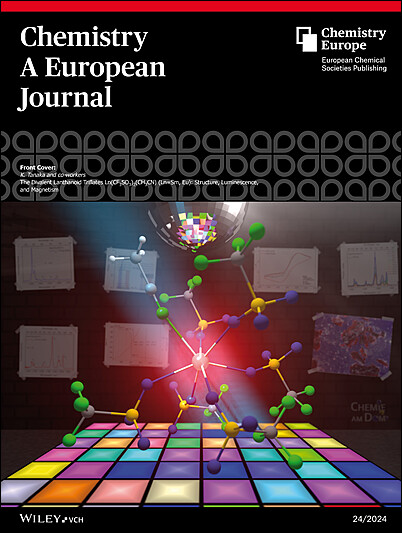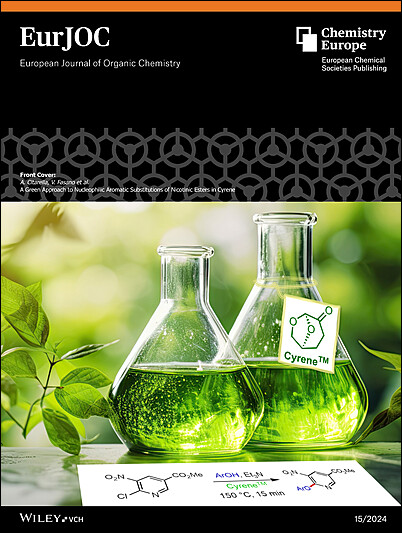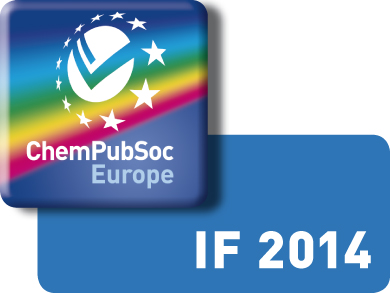|
 |
The Impact of Angewandte Chemie is on the rise: In 2014 more articles than ever were published (2405), many more total cites were recorded (242023), and a rising 5-year impact factor (12.06) demonstrates the leading role of the journal. Between 2009 and 2014 the number of all articles published rose by 46 % while the other “big” journal, Journal of the American Chemical Society (JACS), saw a decline in published articles from 3332 in 2009 to 2651 in 2014 (–20 %). The total cites for both journals rose over that period by 47 % for Angewandte Chemie and 39 % for JACS.
Peter Gölitz, the Editor comments: “In the end it is, however, the individual readers of individual articles who have to decide about the impact a paper has for their research – impact factors don’t help.”
Angewandte Chemie is owned by the Gesellschaft Deutscher Chemiker and a sister journal to all the ChemPubSoc Europe journals below.
|
|
 |
The impact factor of ChemSusChem increased to 7.657; the highest value since the journal started publication in 2008. The journal’s five-year impact factor is 8.653, also the highest value received to date. The immediacy index is 1.395. These increases are an indicator of ChemSusChem‘s relevance to energy and sustainability research; areas with strong societal impact.
|
|
 |
The impact factor of Chemistry – A European Journal remained above 5 for the ninth consecutive year, rising to 5.731 and its five-year impact factor of 5.635 is its highest ever value.
|
|
 |
The 2014 impact factor for ChemCatChem is 4.556. Taking into account an increase in the number of articles published, a stable 5-year impact factor of 5.213, and an immediacy index of 1.029 the journal continues to be well-placed within the catalysis community.
|
|
 |
ChemPhysChem’s impact factor has increased slightly to 3.419 for 2014 (in comparison to 3.360 in 2013). With very strong indirect competition from materials science journals, as well as journals on sustainability, and with journals on electrochemistry and energy materials poised to make inroads as well, this is an excellent performance.
|
|
 |
ChemistryOpen has received its first full Impact Factor: 3.250! It is a high-quality, society-owned general chemistry journal covering all areas of chemistry and related disciplines.
|
|
 |
With a slight increase in the impact factor for 2014 (3.088), ChemBioChem is maintaining its place as an excellent resource for Chemical Biologists. A strong increase in the Immediacy Index (to 0.809) also indicates that ChemBioChem is at the cutting edge of its field, bringing exciting new research to its readership. This will only increase with the recent launch of Accepted Articles on ChemBioChem, making new content available to the community within days of acceptance.
|
|
 |
With an impact factor of 3.065, EurJOC continues to deliver high-quality organic chemistry at high speed.
|
|
 |
The journal ChemPlusChem, which publishes multidisciplinary articles centering on chemistry and related disciplines, receives its first 2-year Impact Factor of 3.026 and posts an increased immediacy index of 0.762.
This young journal is set for success. With increased visibility through social media and ChemistryViews, the high-quality multidisciplinary research published in ChemPlusChem reaches a growing and appreciative audience.
|
|
 |
ChemMedChem remains among the top primary research journals in medicinal chemistry.
|
|
 |
With a 2014 Impact Factor of 2.942, EurJIC has risen in the ranks to position 8 in the subject category “Inorganic and Nuclear Chemistry”. EurJIC continues to be a leading inorganic chemistry journal with high-quality publications.
|
|
 |
Launched in 2014; will receive its first impact factor in 2016
|
|














